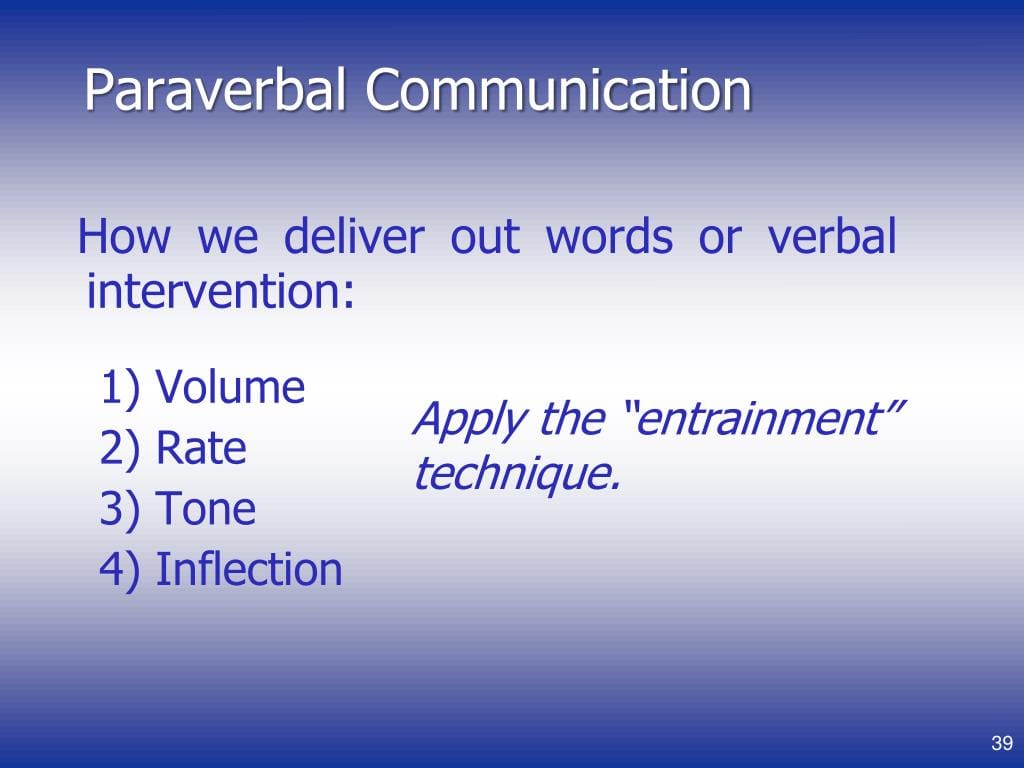Understanding Paraverbal Communication
Paraverbal communication is the unspoken dimension of our speech, the “how” that complements the “what” of our words. It encompasses a range of vocal cues, adding depth and nuance to our messages. These cues significantly impact how our words are interpreted and the emotional responses they evoke. Think of it as the soundtrack to your speech, influencing the listener’s understanding and emotional experience. Explore the groundbreaking advancements in lung health with nif respiratory, where innovation meets respiratory care.
Key Components of Paraverbal Communication
- Tone: The emotional coloring of your voice. Imagine telling a friend exciting news – your tone likely brightens, reflecting shared joy. Conversely, explaining a frustrating situation probably involves a sharper, more tense tone. This emotional inflection dramatically shapes how your message is received.
- Pitch: The highness or lowness of your voice. A high-pitched voice often suggests excitement or nervousness, while a lower pitch might convey calmness or authority. Dynamic pitch variation adds emphasis and keeps listeners engaged.
- Pace/Speed (Cadence): The rate at which you speak. Rapid speech can signal urgency, while a slower pace suggests thoughtfulness. Pauses, moments of silence, play a crucial role, providing emphasis and allowing listeners to process information.
- Volume: How loud or soft you speak. A loud voice can convey confidence or anger, while a softer voice suggests intimacy or vulnerability. Adjusting volume strategically emphasizes points and conveys emotions effectively.
- Pauses: More than mere gaps in speech, pauses are powerful tools. They create dramatic tension, emphasize upcoming words, or allow listeners time to reflect. Used effectively, they enhance clarity and emotional impact.
- Emphasis: Highlighting specific words or phrases. Consider the difference between “I never said that” and “I never said that.” Emphasis dramatically alters meaning and interpretation.
- Inflection: The rise and fall of your voice. Inflection adds color and dynamism, preventing monotone delivery and enhancing engagement. Imagine a monotone voice versus one with varied inflection – the difference is stark.
Why Paraverbal Communication Matters
Paraverbal communication is essential for several reasons:
- Clarity: It helps listeners understand your intended meaning, disambiguating potentially confusing words.
- Emotional Expression: It conveys true feelings, even if words contradict them. Think of saying “I’m fine” in a flat, unhappy tone – the paraverbal cues reveal the underlying emotion.
- Connection: It builds rapport, making others feel comfortable and understood.
- Perception: It shapes others’ impressions of you, influencing whether they perceive you as confident, trustworthy, or intimidating.
- Goal Achievement: It can significantly influence outcomes in various situations, from negotiations to presentations.
Real-World Examples of Paraverbal Communication
- Job Interview: A confident tone, steady pace, and clear articulation project competence, likely influencing the interviewer’s impression positively.
- Sales Pitch: An enthusiastic tone, varied pitch, and engaging pace can make a product more appealing, potentially swaying a customer’s decision.
- Giving Feedback: A calm, supportive tone can make feedback more constructive, increasing the likelihood of acceptance and positive change.
- Apology: A sincere tone, coupled with appropriate pace and volume, conveys genuine remorse.
- Comforting a Friend: A gentle tone, slow pace, and empathetic delivery likely provide comfort and support.
A simple phrase like “That’s great” can have vastly different meanings depending on the paraverbal cues. Said with enthusiasm, it expresses genuine praise; said with a flat, monotone voice, it suggests disinterest or even sarcasm. Unravel the intricate web of deceit and deception in the gripping tale of odors of mendacity.
Improving Your Paraverbal Communication Skills
- Seek Feedback: Ask trusted individuals for honest feedback on how you sound. This can provide valuable insights into areas for improvement.
- Record Yourself: Hearing your own voice can be surprisingly revealing. Pay close attention to your tone, pitch, pace, and other paraverbal cues.
- Practice: Like any skill, paraverbal communication requires practice. Experiment with varying your tone, pitch, and pace to observe how they affect the meaning and impact of your words.
- Observe Others: Pay attention to how others use paraverbal communication, noting how it impacts their interactions. This can provide valuable learning opportunities.
The Nuances of Paraverbal Communication
Paraverbal communication is a complex and evolving field of study. Some experts believe that vocal cues may carry more weight than words themselves, especially when conveying emotions. Research suggests that the majority of communication is nonverbal, with body language and paraverbal cues playing a significant role. However, the precise balance remains a subject of ongoing research.
Cultural differences also play a crucial role. What is considered appropriate or polite in one culture might be perceived differently in another. For example, volume, tone, and directness can vary significantly across cultures.
Furthermore, our understanding of paraverbal communication is constantly evolving. As research continues, we will probably gain further insights into how our voices shape our interactions. This means that while current guidelines are helpful, they are subject to refinement as new information emerges.
Table: Examples of Paraverbal Cues and Their Potential Interpretations
| Emotion | Tone | Pitch | Pace | Volume |
|---|---|---|---|---|
| Anger | Harsh, Sharp | Low to High | Fast | Loud |
| Excitement | Enthusiastic, Animated | High | Fast | Moderate to Loud |
| Fear/Anxiety | Shaky, Hesitant | High | Variable | Soft to Moderate |
| Sadness | Monotone, Flat | Low | Slow | Soft |
| Sarcasm | Ironic, Exaggerated | Variable | Moderate | Moderate |
This table provides general interpretations, but individual and cultural variations can influence how paraverbal cues are perceived. It’s important to consider context and individual differences when interpreting these cues.
- Unlock Water’s Symbolism: A Cross-Cultural Exploration - April 20, 2025
- Identify Black and White Snakes: Venomous or Harmless? - April 20, 2025
- Unlocking Potential: Origins High School’s NYC Story - April 20, 2025















